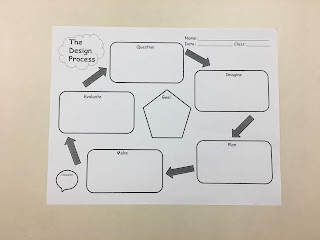Gravity Cars - A Fourth Grade Unit

We started with some Labs that reviewed how to use certain science tools (triple-beam balance, rulers, stopwatch, beakers, graduated cylinders and microscopes. After sessions with each tool, we had a "quiz" on using each of them. Next we had a mini lesson on attachement techniques (flanges, slots, brass fasteners, etc.) which was a review for some and a new concept for others. The students were then asked to write down the first "science" thing that came to their mind when they heard a given word. The words were: gravity, mass, prototype, distance, weight distribution, friction and time. This gave us a base line of concepts important to this project. Now the project: In groups of two, create something that will travel down a ramp and move along the floor the farthest, using just gravity. The only material they could only use was: 1 sheet of oaktag, 1 wooden skewer, 4 plastic wheels, pennies, and masking tape. Tools included: scissors, hole punch, r


